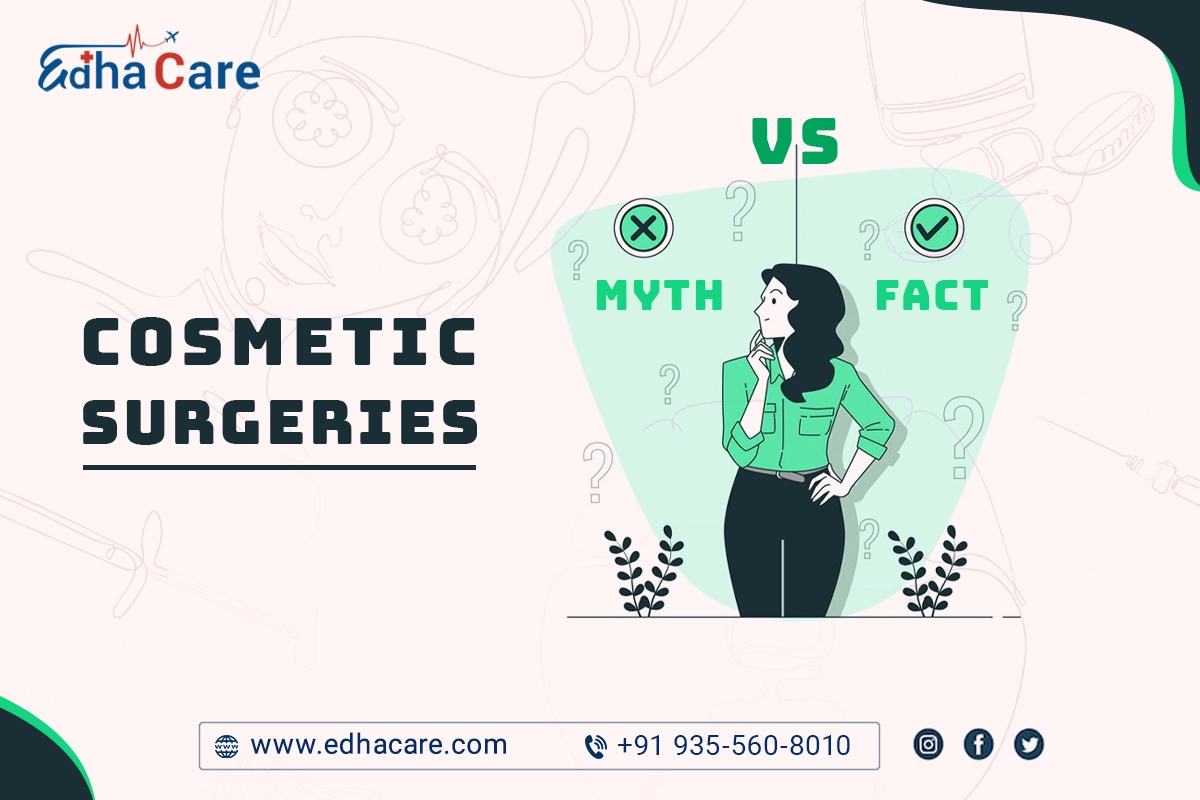Cosmetic procedures have gained immense popularity in recent years, with millions seeking various treatments to enhance their appearance and boost their confidence. However, along with this surge in popularity, a multitude of myths and misconceptions have emerged surrounding these procedures. It’s essential to separate facts from myths about cosmetic procedures to make informed decisions about your health and appearance.
In this blog, we’ll present some common myths about cosmetic procedures.
What Are The Common Myths About Cosmetic Procedures?
-
Cosmetic surgery is only for women
While it’s true that women comprise the largest number of cosmetic surgery patients, the number of male plastic surgery patients has dramatically increased over the last few years. Different surgical procedures for men include eyelid surgery, liposuction, breast reduction, and facelift as well as numerous others. Additionally, nonsurgical rejuvenation, such as Botox and facial fillers, is also becoming very popular among male patients.
People also like to read: Plastic Surgery | Top Secrets No One Has Told You!
-
Cosmetic surgery is only for the wealthy
This is one of the common myths about cosmetic procedures. While many successful or famous people have undergone cosmetic surgery, it is now more budget-friendly than ever. There has been a slight increase of more than 72% in plastic surgical procedures performed since 1997. Nonsurgical cosmetic procedures such as laser hair removal, Botox injections, and skin-resurfacing techniques have seen an even greater increase, which is around 355% over the same time period.
-
Cosmetic surgery entails no risk
Cosmetic surgery involves all the processes and hazards that come with any other surgery by virtue of the fact that it is a surgery. This covers giving anesthetic, the possibility of infection, and potential adverse effects like scarring.
Obese, diabetic, and lung disease-related patients are likelier to experience problems like pneumonia, heart attacks, strokes, and blood clots in the legs or lungs. Smoking regularly also increases risk and slows the healing process.
-
Plastic surgery will leave unsightly scars
This is a myth. There are several cosmetic surgeons who are able to strategically make incisions to make the scars less visible. Of course, there will be some scarring but the scars are typically hidden. Additionally, scars fade in time if you take care of them. This is another common myth about cosmetic procedures.
-
Fat comes back after liposuction
The above statement is a myth. Liposuction does not cause the fat to return. The body stops creating fat cells after birth, although depending on your weight, they do grow or shrink. Targeted areas with liposuction have less fat cells. The fat cells are permanently eliminated after removal.
-
Cosmetic Surgery and Plastic Surgery are the Same
A subcategory of elective plastic surgery, cosmetic surgery is performed to enhance aesthetic appearance. Parts of the body can regain youthfulness, volume, flexibility, and more. Most people have seen the outcomes of cosmetic surgery on famous persons.
To become board-certified in plastic surgery and a member of the American Society of Plastic Surgeons (ASPS), plastic surgeons must complete years of intensive training in specific procedures. More than only physical appearance is improved by plastic surgery. Through reconstructive surgery, it can also treat abnormalities and enhance the functionality of various bodily components.
People also like to read: Plastic Surgery: All We Need to Know
-
Cosmetic Procedures Produce Unrealistic Results
There is a common myth about cosmetic procedures that produce dramatic, implausible changes because of the sensationalization of excessive cosmetic makeovers in tabloid periodicals and television shows. In actuality, the best cosmetic operations aim for subtle, undetectable improvements that complement a person’s traits. Realistic and balanced solutions that improve your appearance while preserving your distinctive qualities are prioritized by knowledgeable practitioners..
-
Cosmetic Procedures Are Always Painful
While some cosmetic treatments may cause some discomfort, the overall experience has been substantially enhanced by current technology and anesthetic choices. Numerous minimally invasive operations only result in minor discomfort, if any, and healing periods have decreased. To promote a more comfortable and pain-free experience, patients can talk with their healthcare professionals about pain management choices.
Key Takeaway
In order to conclude, it can be said that cosmetic procedures – both surgical and nonsurgical – can successfully transform a patient’s emotional and physical well-being. Whether augmenting or minimizing breast size, removing excess skin in “problem areas,” treating excess eyelid skin or fat to give the eyes a more youthful shape, injecting Botox to decrease the appearance of wrinkles, or performing any other cosmetic procedure, our aim is to provide treatments and procedures that aid patients feel confident and satisfied for life.
Frequently Asked Questions
1. What are the most common cosmetic procedures?
The top cosmetic surgeries are breast augmentation, liposuction, nose reshaping, eyelid surgery, tummy tuck, and facelift.
2. What is the most common reason for cosmetic surgery?
Looking younger is a huge reason many people pursue plastic surgery. Life challenges can accelerate the already inevitable aging process, and plastic surgery is a way to manage the aging process.
3. What is the most popular non-surgical cosmetic procedure?
Popular Non-Surgical Cosmetic Facial Procedures. The most popular non-surgical facial procedures include Botox, soft tissue fillers, laser skin resurfacing, and chemical peel.
4. What are the benefits of cosmetic surgery?
Enhanced body image and self-esteem. Improved safety, such as seeing better after removing extra eyelid skin. More natural appearance. Pain relief and greater independence after correcting defects that make it difficult to move.

